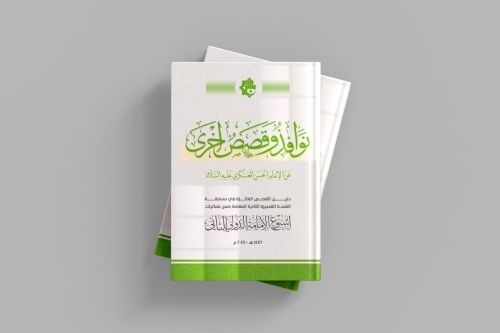

النبات

مواضيع عامة في علم النبات

الجذور - السيقان - الأوراق

النباتات الوعائية واللاوعائية

البذور (مغطاة البذور - عاريات البذور)

الطحالب

النباتات الطبية


الحيوان

مواضيع عامة في علم الحيوان

علم التشريح

التنوع الإحيائي

البايلوجيا الخلوية


الأحياء المجهرية

البكتيريا

الفطريات

الطفيليات

الفايروسات


علم الأمراض

الاورام

الامراض الوراثية

الامراض المناعية

الامراض المدارية

اضطرابات الدورة الدموية

مواضيع عامة في علم الامراض

الحشرات


التقانة الإحيائية

مواضيع عامة في التقانة الإحيائية


التقنية الحيوية المكروبية

التقنية الحيوية والميكروبات

الفعاليات الحيوية

وراثة الاحياء المجهرية

تصنيف الاحياء المجهرية

الاحياء المجهرية في الطبيعة

أيض الاجهاد

التقنية الحيوية والبيئة

التقنية الحيوية والطب

التقنية الحيوية والزراعة

التقنية الحيوية والصناعة

التقنية الحيوية والطاقة

البحار والطحالب الصغيرة

عزل البروتين

هندسة الجينات


التقنية الحياتية النانوية

مفاهيم التقنية الحيوية النانوية

التراكيب النانوية والمجاهر المستخدمة في رؤيتها

تصنيع وتخليق المواد النانوية

تطبيقات التقنية النانوية والحيوية النانوية

الرقائق والمتحسسات الحيوية

المصفوفات المجهرية وحاسوب الدنا

اللقاحات

البيئة والتلوث


علم الأجنة

اعضاء التكاثر وتشكل الاعراس

الاخصاب

التشطر

العصيبة وتشكل الجسيدات

تشكل اللواحق الجنينية

تكون المعيدة وظهور الطبقات الجنينية

مقدمة لعلم الاجنة


الأحياء الجزيئي

مواضيع عامة في الاحياء الجزيئي


علم وظائف الأعضاء


الغدد

مواضيع عامة في الغدد

الغدد الصم و هرموناتها

الجسم تحت السريري

الغدة النخامية

الغدة الكظرية

الغدة التناسلية

الغدة الدرقية والجار الدرقية

الغدة البنكرياسية

الغدة الصنوبرية

مواضيع عامة في علم وظائف الاعضاء

الخلية الحيوانية

الجهاز العصبي

أعضاء الحس

الجهاز العضلي

السوائل الجسمية

الجهاز الدوري والليمف

الجهاز التنفسي

الجهاز الهضمي

الجهاز البولي


المضادات الميكروبية

مواضيع عامة في المضادات الميكروبية

مضادات البكتيريا

مضادات الفطريات

مضادات الطفيليات

مضادات الفايروسات

علم الخلية

الوراثة

الأحياء العامة

المناعة

التحليلات المرضية

الكيمياء الحيوية

مواضيع متنوعة أخرى

الانزيمات
Alpha defensin test (Synovasure)
المؤلف:
Kathleen Deska Pagana, Timothy J. Pagana, Theresa Noel Pagana.
المصدر:
Mosbys diagnostic and laboratory test reference
الجزء والصفحة:
15th edition , p35-36
2025-02-19
915
Type of test: Fluid analysis
Normal findings
Negative
Test explanation and related physiology
Infections in prosthetic joints can occur any time after the joint replacement surgery. Infection is a common cause of failed arthroplasties. The diagnosis of periprosthetic joint infection (PJI) remains a serious clinical challenge. Treatment may require prolonged use of parenterally administered antibiotics followed by complex surgery. Therefore it is important that diagnosis is accurate and timely. Diagnosis of PJI is often hampered by administration of antibiotics before or during joint fluid sampling. These antibiotics can inhibit bacterial growth and cause false-negative results.
PJI is usually considered when joint pain worsens after replacement. Joint fluid analysis is not very reliable because of lack of sensitivity and specificity. Advanced joint fluid stains, serology (IgG, IgM), and molecular testing for bacterial DNA sequencing to identify bacteria or the body’s response to bacteria have been developed to aid the diagnosis of PJI. Unfortunately, these tests require significant pretest care of the specimen, are time consuming, and too expensive to apply to the population of those potentially affected by PJI. Other testing, such as C-reactive protein and sed rate , are not specific enough. Imaging (i.e., CT scanning), while more reliable has a low specificity.
Alpha defensin is a protein that is produced by WBCs in joint fluid in response to PJI. An immunoassay to identify this bio marker can accurately identify nearly all incidences of PJI. This testing, however, cannot identify the specific infecting agent or its sensitivity to antibiotics. While synchronously occurring inflammatory disease (e.g., rheumatoid arthritis) can confound other testing for PJI, alpha defensin levels are not affected. A positive alpha defensin test result in the presence of a low C-reactive protein may represent a false-positive result and should be questioned.
Interfering factors
• Fresh blood in the synovial fluid can alter test results.
Procedure and patient care
Before
* Explain the procedure to the patient. Fasting is not required.
• Obtain an informed consent if indicated.
During
• After aseptically cleaning and locally anesthetizing the area, a needle is inserted into the affected joint space to remove fluid.
• A few cubic centimeters of synovial fluid is injected into tubes provided by the central laboratory.
• The specimen is sent to the central laboratory.
After
* Assess the joint for pain, fever, and swelling. Teach the patient to look for signs of infection at home.
• Apply ice to decrease pain and swelling.
Abnormal findings
PJI
 الاكثر قراءة في التحليلات المرضية
الاكثر قراءة في التحليلات المرضية
 اخر الاخبار
اخر الاخبار
اخبار العتبة العباسية المقدسة

الآخبار الصحية















 قسم الشؤون الفكرية يصدر كتاباً يوثق تاريخ السدانة في العتبة العباسية المقدسة
قسم الشؤون الفكرية يصدر كتاباً يوثق تاريخ السدانة في العتبة العباسية المقدسة "المهمة".. إصدار قصصي يوثّق القصص الفائزة في مسابقة فتوى الدفاع المقدسة للقصة القصيرة
"المهمة".. إصدار قصصي يوثّق القصص الفائزة في مسابقة فتوى الدفاع المقدسة للقصة القصيرة (نوافذ).. إصدار أدبي يوثق القصص الفائزة في مسابقة الإمام العسكري (عليه السلام)
(نوافذ).. إصدار أدبي يوثق القصص الفائزة في مسابقة الإمام العسكري (عليه السلام)


















